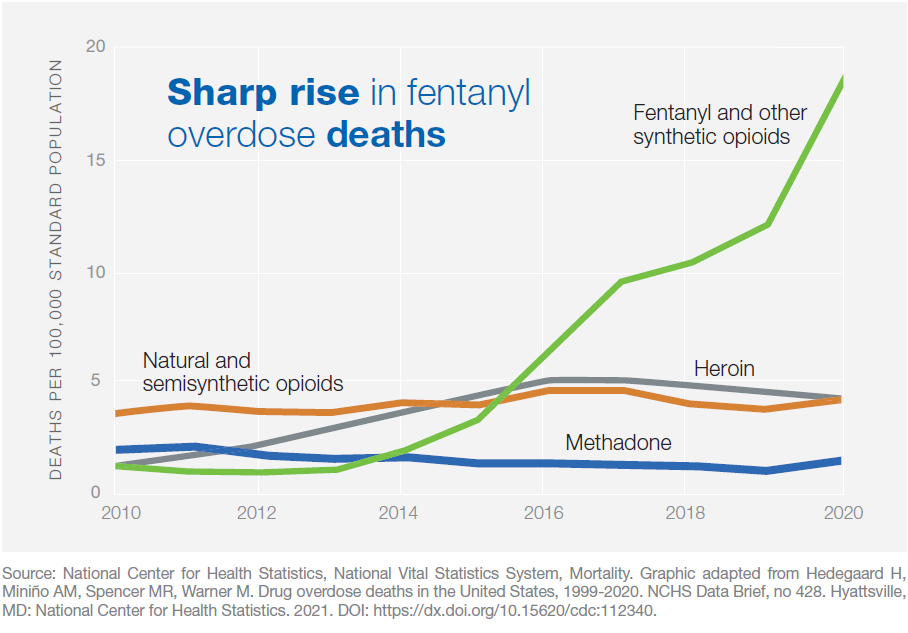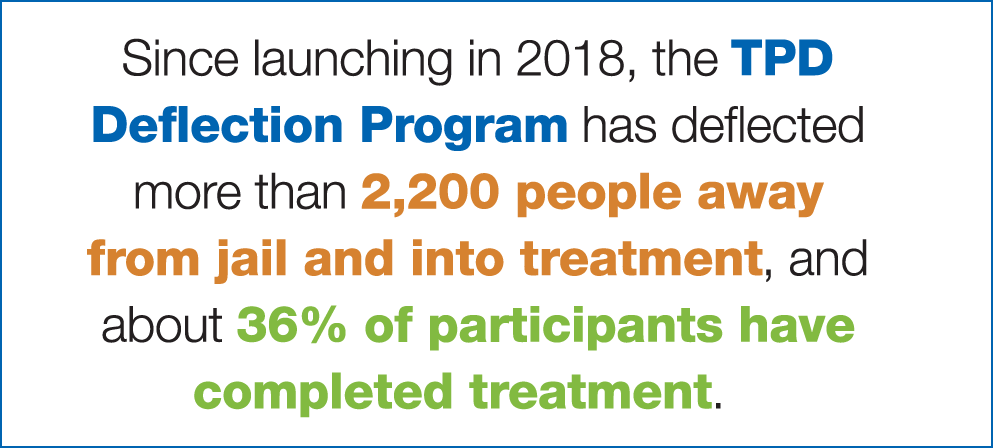Fentanyl Fueling Next Wave of Opioid Crisis
How CMS is Moving the Needle in the Community
“Take even a small amount of fentanyl and you could die.” It’s a harsh message, but one that John Koch, director of community engagement at Community Medical Services (CMS), is determined to get out in the community as deaths from fentanyl use continue to climb around the U.S.

“All of a sudden, what used to be a $150-a-day heroin habit has become a $15-a-day habit,” says Koch. “It’s a habit that can be very sustainable.”
CMS CEO Nick Stavros echoes Koch’s concern, “Fentanyl is making its way into all geographies and into numerous different drug supplies,” he says.
But for CMS, sounding the alarm is not enough. People are dying. More action is needed, now.
Here are four ways CMS is working to impact the fentanyl crisis

Koch and others at CMS literally walk the streets, handing out NARCAN kits to help prevent opioid overdoses. It’s effective to some degree. He says he has handed out over 2,000 kits and helped about 80 people get into treatment. But it’s clearly not enough.
More clinics are needed in just about every U.S. city to provide access to treatment. While opening additional substance use disorder (SUD) clinics is often challenging, CMS presses on, continuing its outreach efforts, creating partnerships, and building trust with those in need by meeting them where they are.

Tera Wise, a CMS manager in Columbus, OH said her clinic noticed many incarcerated inmates were overdosing on fentanyl soon after their release. To combat this trend, her team launched an initiative of medical-treatment therapy inside four state prisons in Ohio. The goal is to try to ease the inmates’ SUD before they’re released. Inmates are treated with a variety of medications, including methadone and buprenorphine while attending counseling for underlying issues.

The fentanyl crisis has made it shockingly clear that creative treatment options are desperately needed. “Coerced treatment doesn’t work,” said Tucson Police Assistant Chief Kevin Hall in a recent article published by USA Today. With fentanyl overdoses in Pima County rising, the police department launched the Deflection Program, which allows those arrested for using illegal substances the option of medication-assisted treatment (MAT) instead of jail.

For CMS, another tried-and-true approach to treatment is providing peer support. Suzanne Plymale, a peer support specialist at the Columbus clinic, frequently shares her story with those struggling with SUDs; her addiction began with prescribed benzodiazepines but then shifted to Valiums and Xanax before escalating to hydrocodone and, ultimately into injecting black-tar heroin and fentanyl. It consumed 26 years of her life. Today, she’s living proof that recovery is possible. Now she works to help others.
While somewhat controversial, harm reduction is a growing movement that saves lives. CMS sees harm reduction as a misunderstood, but highly effective means of treatment. “It works,” says Koch. Studies have shown that harm reduction methods, which prioritize keeping people with SUDs safe rather than focusing on abstinence as the only positive outcome, have greater results towards long-term recovery. Proven harm reduction techniques include syringe exchange programs, disbursing fentanyl testing strips, and increasing the availability of naloxone and MAT.

“Treatment will always be individualized,” says Koch. “What worked for one person may not work for another. But that doesn’t mean it’s ineffective. It truly depends on the individual and where they are in their journey. That’s why we need to continue innovating with our partners in the community to reach more individuals and maximize our impact.”

CMS believes the negativity towards people with opioid use disorder (OUD) has no place in our society. Everyone has a role to play in ending this devastating crisis. The most impactful thing individuals can do is help end the stigma. Replace negative thoughts, disgust, or apathy with empathy and compassion. These individuals are not torments to our communities; they are people – mothers, fathers, sons and daughters suffering from a serious illness.
Educate yourself on the issues, the science behind opioid use disorder, and the proven treatment options, and share that information with those around you. “You need to listen to the people in the trenches, be compassionate and not paint folks with a broad brush,” says Plymale. “There’s no way we can enforce our way out of this problem.”


CMS can’t win this war alone. Nor can other treatment providers, first responders, hospitals, or politicians. The best way to end the crisis is to work together as a community to become more empathetic, allow more treatment and harm reduction programs, and to stop the stigma.
Community programs like Tucson’s Deflection Program and CMS’s correctional health and outreach programs are great examples. CMS also partners with first responders, who are often the first on the scene, to talk to people on the street, engage with them and listen to their needs, and to discuss treatment options when appropriate. “That’s how you get people the help they need and how you make a difference,” says Koch. “We need to partner up as a community and provide MAT at a convenient location, so people can easily access treatment and get on their feet again. It works; we see it all the time.”
Deaths Occurring at Historic Rates
According to the White House’s Office of National Drug Control Policy, the surge of fentanyl use is reaching an all-time high, with deaths reaching historic rates never been seen before. “It’s time for people to stand up and say, ‘enough death is enough death,’” says Koch.

